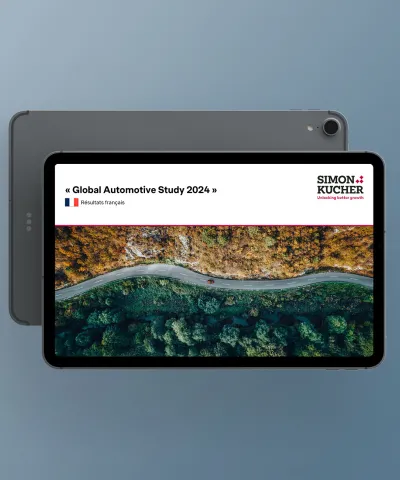How can international automotive companies convince potential customers to consider their brands? In part two of our How Emerging Markets Can Succeed in Europe series, we explain the importance of understanding target consumers and how to overcome the biggest barriers to entry.
Knowing your target customers and how to reach them is a quintessential step of a market entry strategy, especially when aiming to appeal to cultural and economic specifics outside of your own borders. To convince customers to trust foreign brands and embrace innovative products (particularly those from emerging markets), you have to really know what makes customers tick, going beyond a handful of demographics such as age and social status.
One common error is to apply a one-size-fits-all strategy across countries, having identified target customers at home and expecting a new market to yield similar success. What this new group of customer values and how much they are willing to pay for that value are often underestimated in targeting – despite being major drivers behind purchase decisions. The result? Lack of demand and trust among customers due to ineffective messaging, inappropriate features, and a misguided price tag.
For international automakers that are eyeing the European market, a solid knowledge of target customers will be essential to a successful market entry. One compelling example can be drawn from the story of the Toyota Lexus, described in the book, Confessions of the Pricing Man by Hermann Simon. It shows how while a strategy may be successful in one market, it cannot simply be transferred over to another with the guarantee of achieving similar results.
The above example highlights the importance of identifying the target segment a priori and ensuring an understanding of the buyer’s decision-making process. In this article, we look at the differences in behavior between Chinese and European customers, highlighting how attitudes toward electric vehicles can differ significantly. However, the pitfalls and best practices are relevant in a wide range of international markets aspiring to succeed in Europe. The same rule of thumb always applies: you need to know what your target customers desire from day one.
Lessons from China: Targeting European Electric Vehicle Buyers
Having rolled out numerous subsidies and incentive schemes in recent years, the Chinese government has embraced the shift from combustion engines to EVs, which has given automotive companies in China a competitive edge. While Chinese cars may have previously seemed like cheaper copies of other well-known models, today China’s vast range of EVs gives European consumers much ampler choice compared to home brands. However, companies unwillingly fail to fully capture the market reality and fall into several common pitfalls:
1. Mindset pitfall: “Chinese brands are perceived as state-of-the-art”
Seeing how Chinese tech brands have conquered the local market in China can lead companies to believe there is an increased popularity and acceptance of Chinese automotive brands, too. It is tempting for car makers to draw on observations from successful counterparts in the tech space, such as Huawei, Mi, and Tiktok, and envision the same success.
Market reality: Skeptical buyers
Chinese cars are yet to establish a reputation of reliability and quality in Europe, with many customers believing that such brands have a long way to go before meeting the same standards as European cars. For example, a recent poll by Auto Motor und Sport shows that German consumers’ opinions of Chinese EVs remain polarized, highlighting the need for detail in targeting. In general, European consumers have been more hesitant to adopt electric vehicles, preferring to stick to what they know – models from e.g. Volkswagen’s ID series may be the more likely, safer choice. That said, there are definitely some customers in Europe looking to buy high-quality, reasonably priced vehicles. Through intelligent branding and identification of the right target segment, there is an opportunity to become a household name like Huawei, but it requires a different approach.
2. Mindset pitfall: “We are targeting the young and rich”
The young and wealthy customer often comes up in Chinese automotive projects. But who actually is this customer, and what do they want? Assuming the segment to be younger, tech-savvy, and more open to new things may be relevant to the Chinese market, but targeting a young, rich European should also raise the question of “then why won’t they just buy a BMW or a Porsche?”
Market reality: It’s not just about demographics
Even if younger and tech-savvy customers are more likely to be open to new things, it doesn’t mean that this group should be targeted as potential customers. That’s because applying social-demographical criteria such as age, income, social status, and personal values are weakly correlated with actual preferences, if at all. Words like “innovative” and “trendy” don’t provide any indication on features or price, which are determined through an understanding of a customer’s needs. In fact, our experience shows that the target segment most likely to be willing to pay for a Chinese car brand are down to earth, smart consumers who are rational in their car purchase and are primarily driven by concrete use cases, perceived value of the product, and price.
3. Mindset pitfall: “Look at our cool, digital features”
With China’s smartphone generation as a backdrop, Chinese automotive companies tend to focus less on traditional automotive capabilities and are more excited about digital features, such as equipping a vehicle with 5G technology. A European customer, however, is more likely to ask “why do I need a car with 5G, and why should I pay an additional 500 euros for it?”
Market reality: Build the product around the price
In their bestseller Monetizing Innovation, our colleagues Madhavan Ramanujam and Dr. Georg Tacke explain how smart companies design the product around the price. This means first finding out what features customers value and how much they are willing to pay for them. Any digital benefits need to be translated into value for customers, rather than just being possible from a technical standpoint. We will be talking about this in our upcoming article in this series on product design. Until then, our colleagues share some interesting tips for monetizing innovation in the automotive industry here.
Key takeaways for identifying your target customers
- Don’t make assumptions about customers: International companies need to have a holistic picture of their European prospects. Knowing how customers really tick will provide important cues on how to engage them.
- Go beyond social demographics to build an outside-in business case: This includes gathering external input on value, price, cost, and volume, and triangulating findings from multiple sources to depict the ideal customer journey.
- Follow a value-driven approach: Selling a product requires a compelling story to drive customers to buy and use it. Systematically incorporate the target customers’ product preferences, willingness to pay, and purchase behavior in an effort to draw concrete implications for branding, product offering, pricing and sales.
Read more from this series:
Part 1: Six Pillars for Carmakers from Emerging Markets to Succeed in Europe
Part 2: How Upstart Carmakers Can Discover Their European Target Customers
Part 3: How to Tailor Portfolio Offerings to Appeal to European Customers
Part 4: Product Design: Helping Customers to Navigate Choice
Part 5: Succeeding in Europe: How to Build Trust through Price
Part 6: Automotive Newcomers: Sales Model for the B2C Market
Part 7: Automotive Newcomers: Sales Model for the B2B Market








